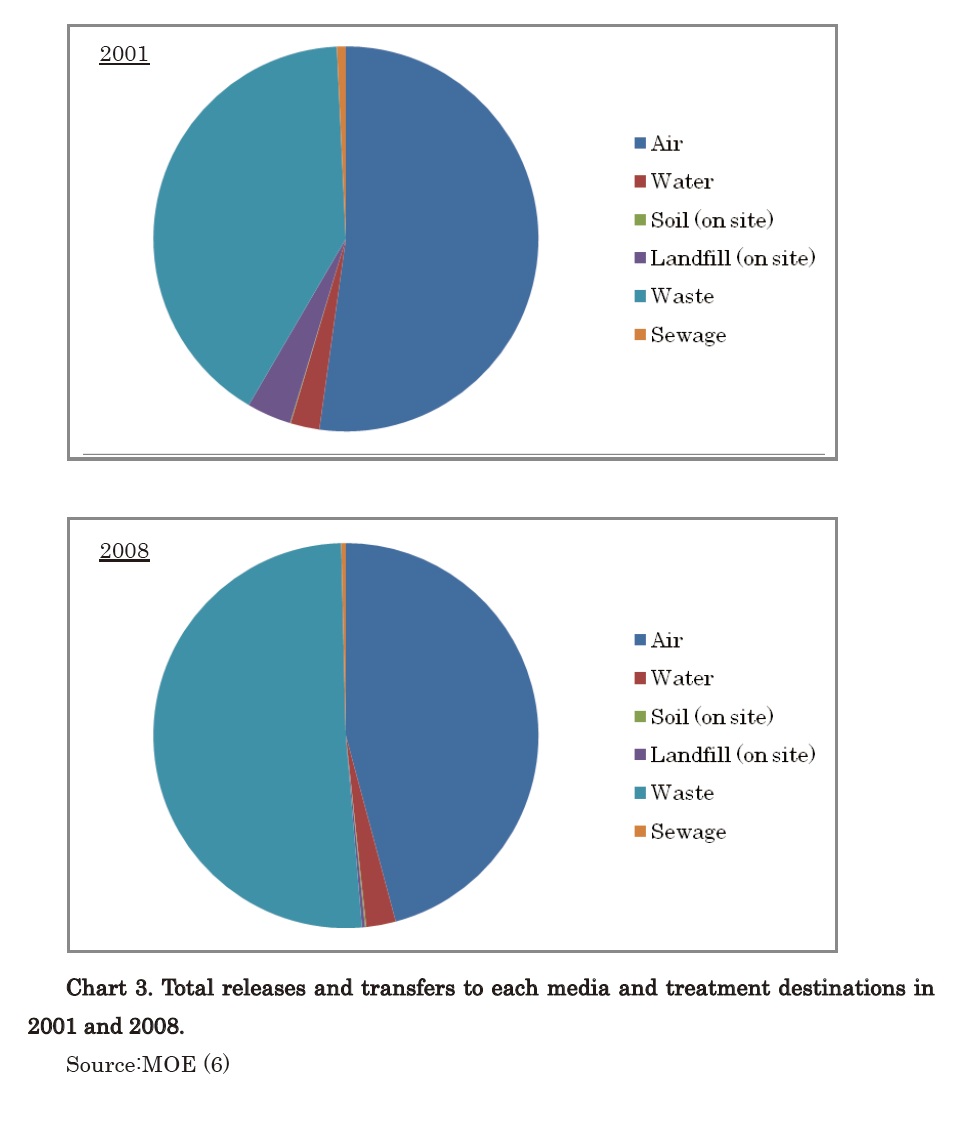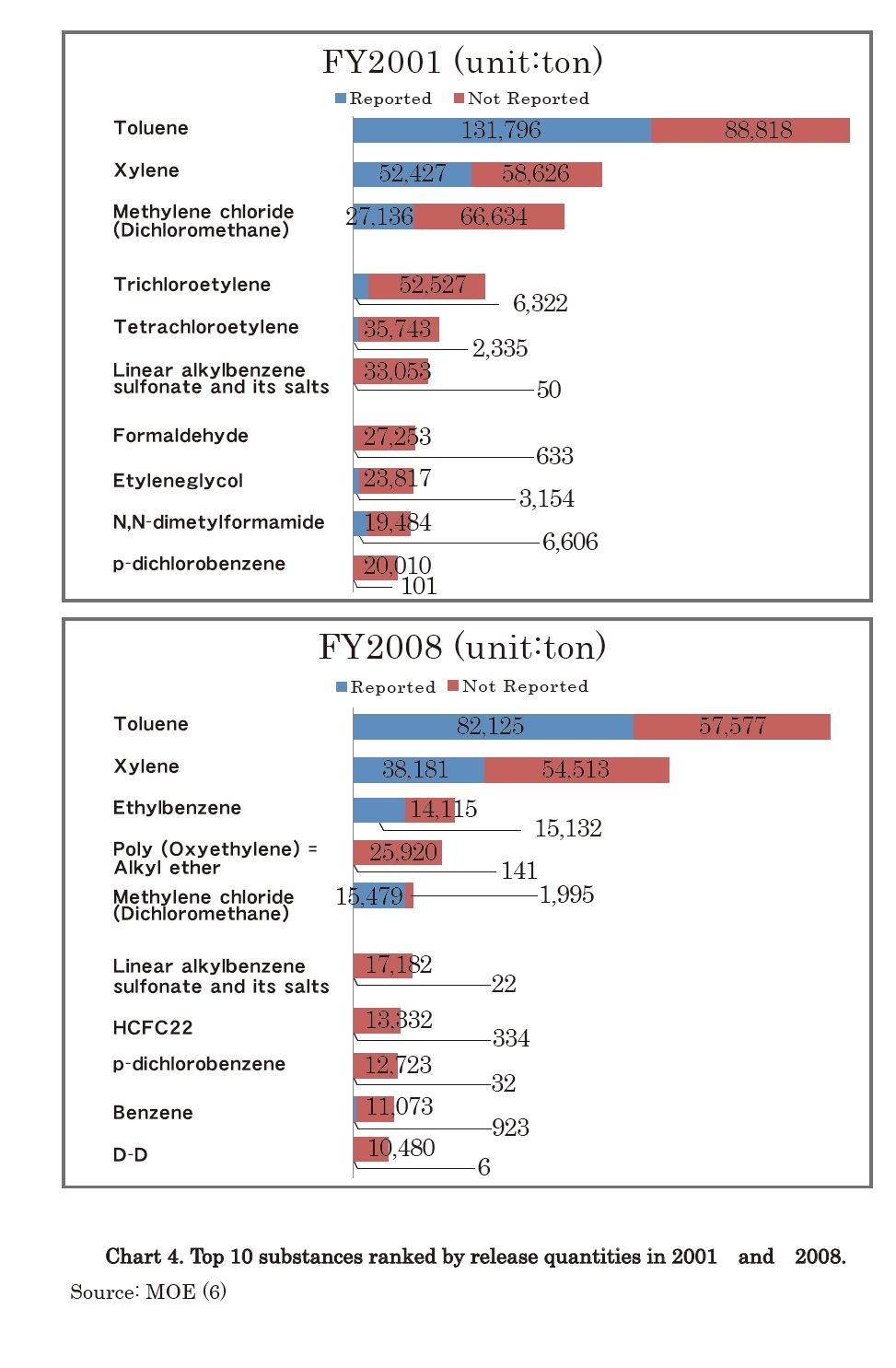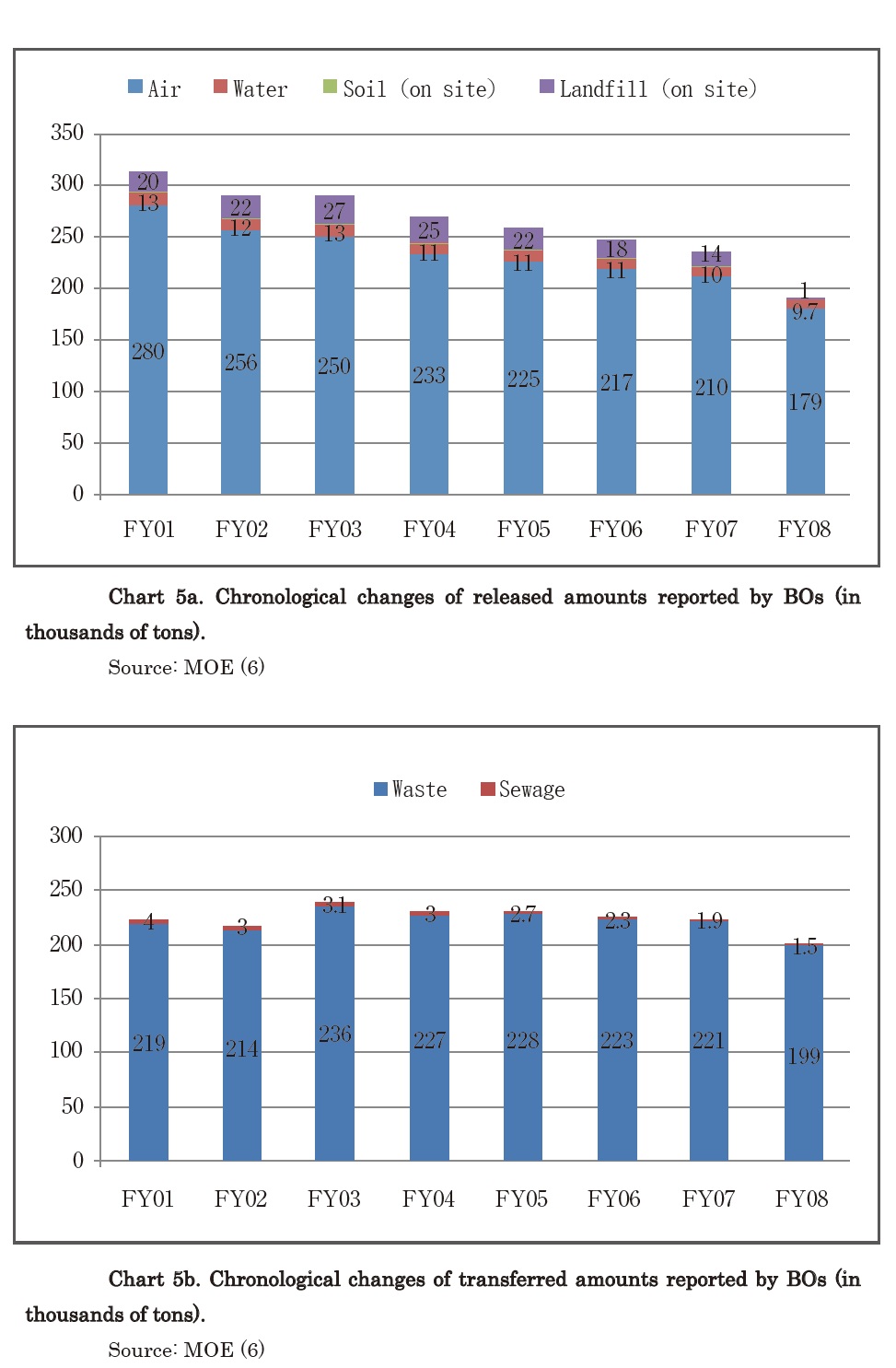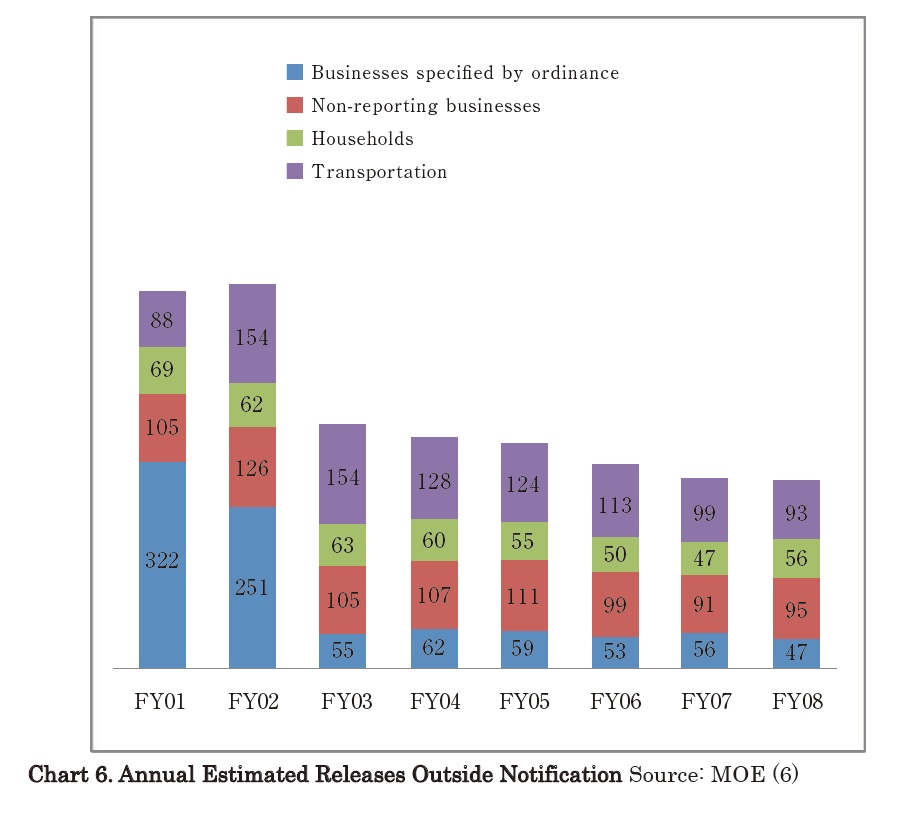| 5. Reviewing Trends in the PRTR Data to FY2008 (1) Large reductions in release and transfer amounts According to the PRTR data for FY2008 (released February 2010 (6) (8)), releases and transfers reported by BOs totaled 400,000 tons, a reduction of 24.5% from FY2001. BO releases alone amounted to 199,000 tons, down by 15.4% from FY2007 (but had only declined by 9.1% from 2001 to 2007). These releases break down into 179,000 tonnes (90% of total release) to air, 9,700 tonnes (4.9%) to water, 3,800 tonnes (0.19%) into soil, and 10,000 tonnes (5.1%) landfill disposal on site at facilities. It is remarkable that 90 % of the toxic substances released into the environment is released into air from reporting BOs. The total amounts of transfers have also reduced, to 201,000 tons, a 10% reduction from FY2007. This is the first time that a reduction has been seen in seven years since FY2001. This breaks down to 199,000 tonnes transferred as waste (a 10% reduction from the previous year) and 1,500 tonnes (a 19% reduction) for transfers into the sewage system. The figures show that most of the transferred amounts consist of wastes for intermediate treatment or permanent disposal and only a small portion of toxic substances are discharged into sewage. BOs often collect toxic substances in order to reduce releases. In such cases, toxic substances are counted as transfer to wastes. While releases have been decreasing due to BO's efforts, amounts of transfer as wastes increase when toxic substances are collected as wastes. Therefore, the trend shows that the releases are decreasing but that the transfers to wastes are slightly increasing. Only in FY2008, the transfers to wastes decreased due to reduction in prodution amounts. The Japanese PRTR have promoted BOsf voluntary efforts to reduce releases of toxic substances since 2001. It is ironic that economic depression in 2008 apparently resulted in greater reduction of releases. It is a challenge for BOs to reduce the amounts of transfer as waste, which could increase by collecting wastes in order to redce the releases into environment. Since wastes are not counted as transfers when they are recycled, BOs should aim to increase the amounts of recycling.
The PRTR system will be changed this year to reflect the transfer of wastes to different treatment options such as incineration or permanent disposal (including landfill disposal). 
The author has looked at several industrial statistics (9), including production data, to research how Japanese industriesf production activities were affected by the global financial crisis in the wake of Lehmanfs fall. Despite decreasing car production in the US, Toyota still boasted the worldfs largest production of cars. However, the Japan Automobile Manufacturers Association, Inc., announced that FY 2008 production was 10,005,771 cars, a reduction of 15% on the previous year. In FY 2007, the production was 11,790,059 cars, a slight increase (102.5%) on the previous year.
Electrical machine production statistics indicate that the shipment value in FY 2008 was JPY 23,377,340 million, similarly down by 15% on the previous year (10). According to statistics on raw steel production from the Japan Iron and Steel Federation, the production amount was 105.5 million tons, a 13.2% reduction on the previous fiscal year (11).
As shown above, production in FY2008 was reduced by 15% for major industries and so we might assume that the materials and chemical substances used for production should also be reduced by 15%, with similar reductions for releases and transfers. Releases were down by 15.4 %, very similar to the industrial production changes. Transfers were down by just 10% and so there is some discrepancy with the change in industrial production.
The purpose of the Act is to reduce the amounts of toxic substances released into the environment and the PRTR system is implemented as a tool to promote voluntary management by industry. BOs are expected to make voluntary efforts to reduce the released amounts of toxic substances by reviewing their data every year and comparing them with their competitorsf data.
During the five years from FY2003 (when full implementation started with the more stringent one ton threshold) the total released amounts reduced by 24.3%, an approximately 5% reduction annually for five years.
On the other hand, a 15% reduction is seen from FY2007 to FY2008 due to the economic downturn. It becomes obvious that the influence due to production decreases is greater than industriesf voluntary efforts. The analysis of FY2008 data teaches us that it is important to be able to correlate quantities of hazardous substances being handled and released, or to be able to correlate releases with production units in order to evaluate industriesf voluntary management efforts.
Several local governments, such as Saitama prefecture, Kanagawa prefecture
and Tokyo Metropolitan Government, have introduced local ordinances to
require BOs to report handling amounts (12). At regional seminars hosted
by T Watch (Picture 1), local government staff in charge of PRTR implementation
have claimed that industries in their communities have successfully reduced
releases into the environment more through industriesf voluntary efforts
than through decreases in production even for FY2008. Progressive local
governments with local ordinances regarding chemical substances seem to
encourage reductions through voluntary efforts by industry (12). For gaverageh
local governments without ordinances, it is not clear whether FY2008 releases
were reduced only in proportion to the decrease in production. Further
analysis is required (4).
Chart 4 indicates that releases from BOs of listed industries reduced from 251,000 tonnes in 2002 to 55,000 tonnes in 2003, but reasons for this significant reduction have not been given by the national government (9). The reporting thresholds with respect to annual handling amounts were changed from five tonnes per year to one ton per year in 2003. As a consequence of the change many BOs were transferred from the Estimated Releases Outside Notification section to direct reporting; and the national government estimated that the Estimated Releases Outside Notification were reduced by 200,000 tons. Although at the same time the releases reported by BOs should have increased theoretically, in fact they did not. This probably means that the government calculation overestimated the releases from BOs without reporting requirements. T Watch requested a review of the estimation by the government. However no errors were admitted, no review was allowed and the mysterious reduction of 200,000 tonnes remains without explanation(authorLs correspondence with MOE in December 2006). (13)
|


